Keep exploring Gerar in the Bible Map to uncover the crossroads of ancient cultures, intriguing tales, and archaeological mysteries.
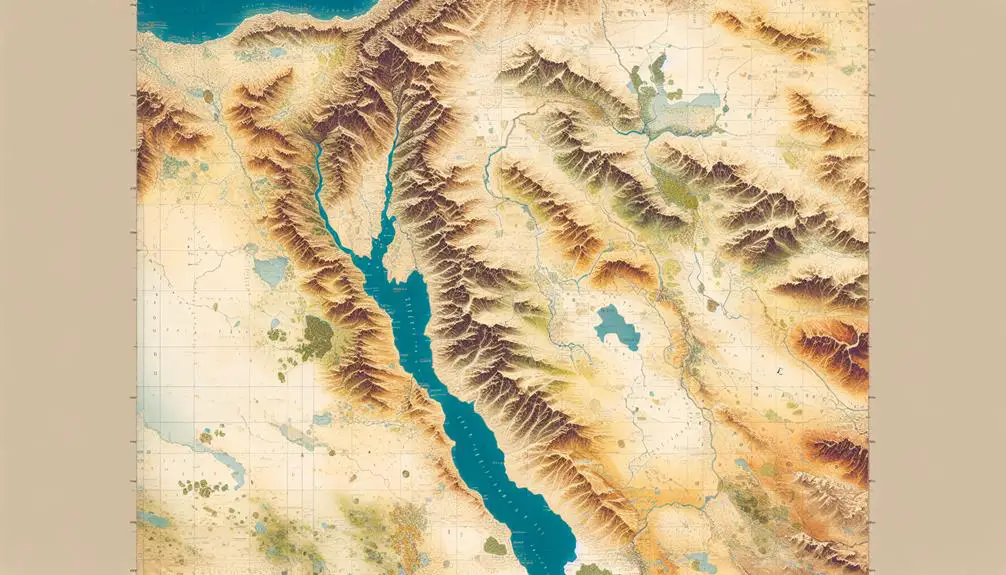
Gerar in the Bible Map
Glimpsing Gerar on the biblical map generates genuine curiosity about its geographical gems and historical significance.
You'll find that this ancient locale isn't just a dot on ancient parchments; it's a crossroads of cultures, tales, and archaeological intrigue.
Gerar's strategic significance and its narratives within biblical texts raise questions about its real-world impact and the veracity of these storied accounts.
By exploring what scholars have unearthed about Gerar, you're stepping into a larger conversation about how history and faith intertwine, leaving you to ponder the implications of these discoveries on modern interpretations of ancient texts.
Key Takeaways
- Gerar played a central role in biblical narratives, notably in stories involving Abraham and Isaac.
- The city's strategic location facilitated ancient trade routes, enhancing its economic and military significance.
- Archaeological findings in Gerar provide insights into its socio-economic life and cultural practices.
- Gerar's interactions with the Philistines and its place in divine-human covenants highlight its importance in biblical history.
Historical Background of Gerar
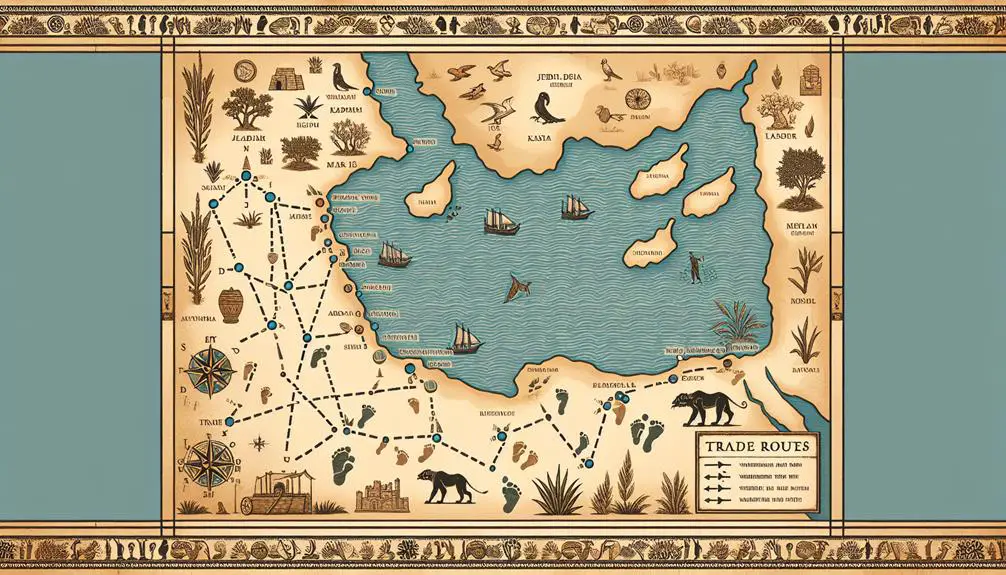
Gerar, an ancient city mentioned in biblical narratives, holds a pivotal position in the understanding of Near Eastern history, offering insights into the socio-political and economic landscapes of its era. As you delve into its historical background, you'll uncover that Gerar's rulers played significant roles in shaping the city's destiny, often navigating complex relationships with neighboring tribes. These interactions weren't merely about power struggles; they were also about trade, alliances, and cultural exchanges that influenced the development of the region.
The governance of Gerar was remarkably adept at leveraging its geographical location to facilitate trade. This economic acumen not only bolstered the city's prosperity but also positioned it as a crucial hub in the ancient world. Moreover, the rulers' diplomatic engagements with neighboring tribes underscored a sophisticated understanding of regional politics. Through treaties, marriages, and sometimes conflicts, Gerar's leaders ensured the city's survival and prosperity amidst the shifting dynamics of Near Eastern geopolitics.
Analyzing Gerar's historical context, you'll appreciate how its rulers and their interactions with neighboring tribes contributed to the city's prominence. This aspect is integral to comprehending the broader socio-political fabric of the era.
Archaeological Discoveries
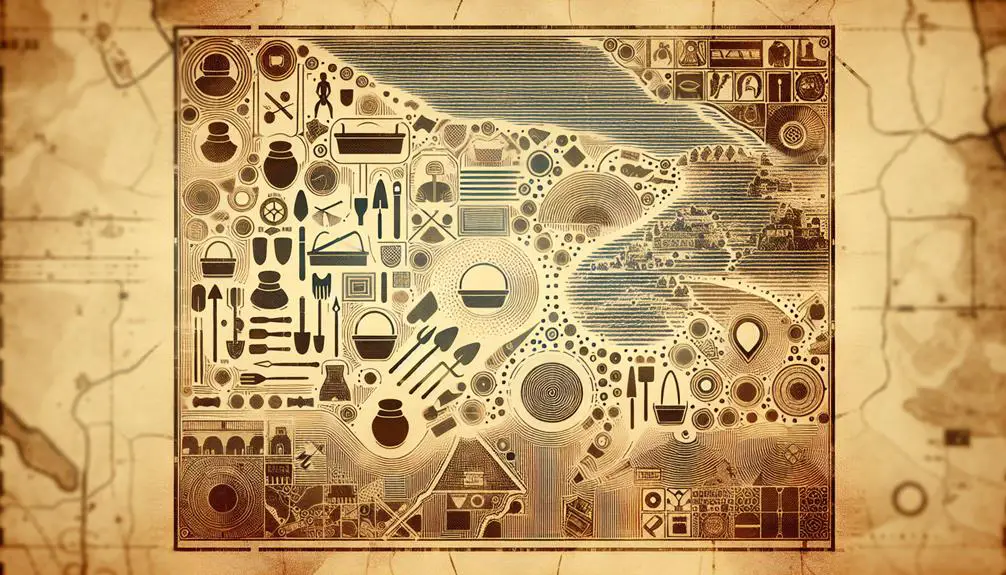
You've encountered the layer where history meets tangible reality through the archaeological discoveries in Gerar.
These ancient finds not only validate textual references but also enrich our understanding of Gerar's historical context within the ancient Near East.
Each artifact and structural remnant serves as a critical node in the intricate web of historical narratives, offering insights into the daily lives, economic activities, and geopolitical significance of this biblical city.
Ancient Finds Uncovered
Uncovering ancient finds has shed new light on the historical and cultural context of Gerar as mentioned in biblical references. Through the use of modern excavation techniques and digital reconstruction methods, archaeologists have been able to piece together a more comprehensive picture of Gerar's past. These advances have led to several key discoveries:
- Ancient Inscriptions: Deciphered texts providing insights into the governance and religious practices of the time.
- Architectural Remains: Foundations and structures that outline the city's layout and its strategic significance.
- Ceramic Artifacts: Pottery that reveals trade networks and daily life.
- Coinage: Currency that offers clues to economic conditions and external relations.
Each of these discoveries contributes to a nuanced understanding of Gerar, highlighting its importance in ancient times.
Gerar's Historical Context
Exploring the archaeological discoveries in Gerar further enriches our understanding of its historical context, offering a window into the societal, economic, and political intricacies of this ancient city.
Delving into Gerar's etymology reveals layers of cultural and historical significance, suggesting a rich backdrop against which its story unfolds.
These findings underscore the city's prominent role in regional trade networks, evidenced by diverse artifacts that hint at extensive commercial interactions.
Moreover, the religious significance of Gerar is illuminated through remnants of ancient worship sites, providing insight into the spiritual life and practices of its inhabitants.
Analyzing these archaeological treasures, scholars piece together a more nuanced portrait of Gerar, highlighting its pivotal position in the tapestry of ancient Near Eastern civilizations.
Biblical Narratives Featuring Gerar
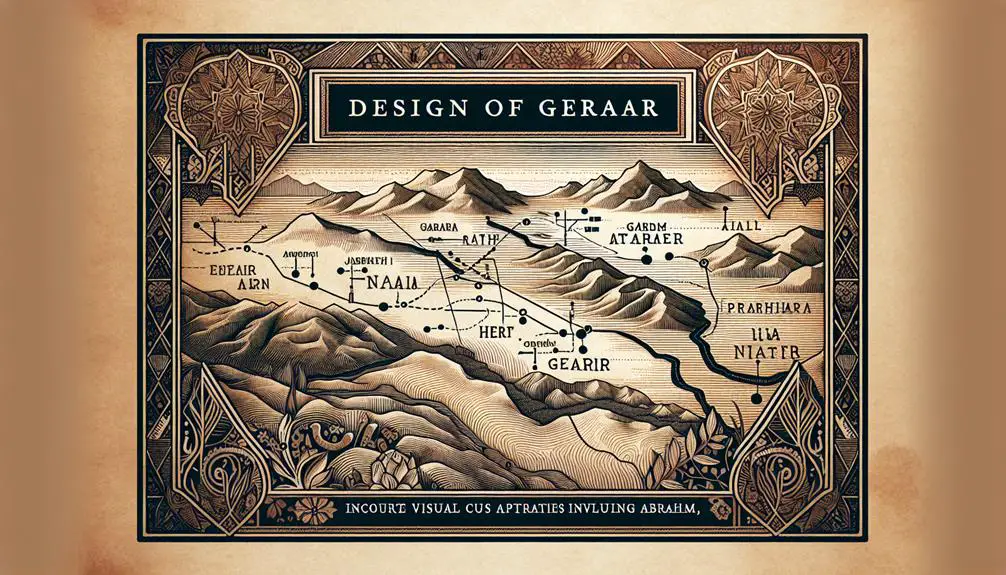
Gerar, a prominent location in biblical narratives, serves as the backdrop for several pivotal events involving patriarchs and their interactions with local rulers. This area is notably significant for its:
- Abrahamic Encounters: Gerar is central to stories involving Abraham's journey. Here, Abraham experiences tension and negotiations with Abimelech, the king of Gerar, particularly over Sarah, Abraham's wife. This incident highlights the complexities of Abrahamic faith and diplomacy in unfamiliar territories.
- Philistine Interactions: The narratives recount Abraham's and later Isaac's interactions with the Philistines, emphasizing the recurring theme of conflict and covenant between the Hebrew patriarchs and their Philistine counterparts. These episodes offer insights into the socio-political dynamics of the time.
- Isaac's Residency: Isaac, Abraham's son, also has significant dealings in Gerar, including disputes over water rights and wells, further underlining the region's importance in the patriarchal narratives concerning resource access and community relations.
- Covenant Renewal: In Gerar, God reiterates His covenant with Isaac, reinforcing the divine promise to Abraham's lineage and highlighting Gerar's role as a setting for divine-human interaction and covenantal faithfulness.
These narratives collectively paint Gerar as a critical zone of engagement, where divine promises, human faith, and geopolitical realities intersect in the biblical lore.
Gerar's Strategic Significance
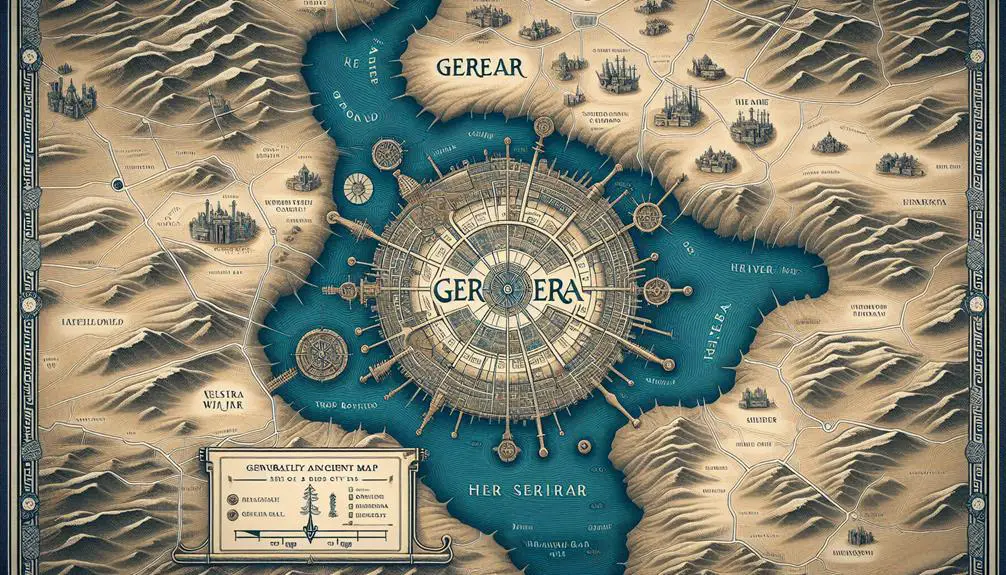
You'll find that Gerar's strategic significance in ancient times can't be overstated, particularly when examining its role in facilitating ancient trade routes. As a military outpost, it served as a critical point of defense and control, underpinning the security and expansion of territorial influence.
Furthermore, its status as an agricultural production center not only bolstered the local economy but also ensured a steady supply chain that supported both trade and military endeavors.
Ancient Trade Routes
Several ancient trade routes converged at Gerar, underscoring its critical role in regional commerce and politics. This intersection facilitated not only the flow of goods but also the exchange of cultures and ideas. Gerar's strategic location meant it served as a crucial hub for:
- Desert Caravans: Facilitating trade between inland regions and the coast, these caravans carried spices, textiles, and precious metals.
- Maritime Trade: Its proximity to the coast enabled sea-borne commerce, linking it to distant markets across the Mediterranean.
- Agricultural Exports: Leveraging fertile lands, Gerar exported grains and other foodstuffs, vital for sustaining distant populations.
- Cultural Exchange: The meeting of diverse peoples fostered a rich tapestry of cultural interactions, influencing art, religion, and social structures.
Gerar's prominence in ancient trade routes highlights its indispensable role in the economic and cultural landscapes of the region.
Military Outpost Importance
Beyond its role as a commercial hub, Gerar's strategic positioning also elevated its importance as a military outpost, guarding critical trade routes against potential threats. You'll find its location was not merely coincidental but a calculated choice, harnessing natural terrains for defense mechanisms, which played a pivotal role in its resilience against siege tactics.
Aspect |
Description |
Impact on Gerar |
|---|---|---|
Natural Terrain |
Utilized for fortifications and visibility |
Enhanced defense |
Trade Routes |
Positioned to oversee and protect vital connections |
Strategic importance |
Siege Tactics |
Developed innovative responses to sieges |
Improved survival odds |
Gerar's military prominence wasn't just due to its position; it was about how it adapted and fortified itself, ensuring its survival and control over crucial economic lifelines.
Agricultural Production Center
In addition to its military and commercial significance, Gerar emerged as a vital agricultural production center, leveraging its fertile lands to sustain and enrich its populace. This strategic significance is underscored by several factors:
- Soil Fertility: Gerar's lands were rich in nutrients, essential for growing a variety of crops. This fertility was a key factor in its agricultural success.
- Irrigation Techniques: Advanced irrigation methods allowed for the efficient watering of crops, maximizing yield in the arid climate.
- Crop Diversity: The area supported a wide range of agricultural products, contributing to a stable food supply.
- Trade Networks: Surplus produce was often traded, enhancing Gerar's economic status in the region.
These elements combined to make Gerar a crucial agricultural hub, reflecting its broader strategic importance.
Cultural and Economic Life
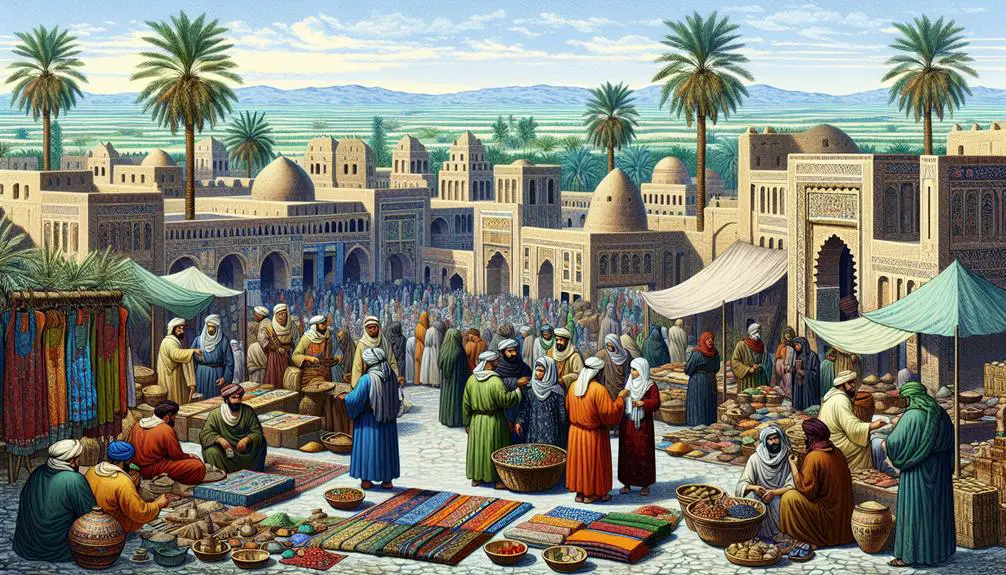
Analyzing the cultural and economic life of Gerar reveals a society deeply entrenched in agricultural pursuits, which significantly shaped its social structures and interactions. The backbone of Gerar's economy was agriculture, influencing both religious practices and social hierarchy. Religious rituals were closely tied to the agricultural calendar, celebrating sowing and harvest seasons with ceremonies that sought divine favor for bountiful yields. This reliance on agriculture didn't just dictate religious observances; it also established a clear social hierarchy. Landowners and those controlling water resources occupied the upper echelons of society, wielding considerable power and influence.
Moreover, the economic activities in Gerar fostered a community-oriented lifestyle. Cooperative farming methods were commonplace, necessitating collaboration among individuals and families. This not only enhanced agricultural output but also strengthened communal bonds and social cohesion. The exchange of goods and services, facilitated by this agricultural surplus, led to the development of local markets, further stimulating Gerar's economy. Trade with neighboring regions was a natural progression, introducing a variety of goods into the local economy and promoting cultural exchange. This symbiosis between agriculture, economy, and culture was pivotal in shaping the identity and legacy of Gerar.
Impact on Modern Scholarship

Understanding Gerar's agricultural basis sheds light on its profound influence on modern scholarship, particularly in the fields of archaeology and historical ethnography. This influence can be broken down into several key areas:
- Textual Criticism: Scholars have utilized the detailed descriptions of Gerar to refine their methodologies in textual criticism. By comparing biblical accounts with archaeological findings, they've honed their ability to discern historical from literary elements in ancient texts.
- Geographic Accuracy: The precise identification of Gerar's location has bolstered studies in biblical geography, affirming the geographic accuracy of certain biblical narratives. This, in turn, has impacted how scholars interpret the spatial dynamics of ancient narratives.
- Agricultural Studies: Gerar's agricultural practices have provided a window into the economic foundations of the region. This has influenced modern interpretations of ancient economies, contributing to a more nuanced understanding of how agricultural surplus supported the social and political structures of the time.
- Cultural Interactions: The strategic location of Gerar, serving as a crossroads for various cultures, has enriched studies on cultural exchanges in the ancient Near East. It's facilitated a deeper understanding of how trade, warfare, and diplomacy shaped the development of these societies.
These areas of impact highlight how Gerar's study enriches modern scholarship across multiple disciplines.
Frequently Asked Questions
How Has the Climate in the Gerar Region Changed Since Biblical Times, and What Impact Might This Have Had on Its Historical Settlements?
Since biblical times, the climate in the Gerar region has undergone significant changes, with climate modeling indicating shifts towards drier conditions. This evolution likely impacted historical settlements by challenging traditional agriculture adaptation strategies.
As water sources became scarcer, communities had to innovate or move, affecting the social and economic fabric of the area. Understanding these climate dynamics offers insight into the resilience and adaptability of ancient societies faced with environmental changes.
Are There Any Specific Rituals or Religious Practices Unique to the People of Gerar Mentioned in Non-Biblical Texts or Folklore?
You're diving into whether there are unique rituals or religious practices tied to Gerar in non-biblical texts or folklore.
While specific rituals aren't broadly documented, it's key to consider how ancient trade routes and cultural assimilation might've influenced local customs.
These interactions likely introduced diverse practices, blending indigenous traditions with those of neighboring communities.
This historical melting pot scenario suggests that Gerar's spiritual life was rich and varied, albeit not well-documented.
How Has the Depiction of Gerar in Art and Literature Evolved Over the Centuries?
You'll find that the depiction of Gerar in art and literature has undergone significant evolution over centuries. Artistic interpretations have shifted, reflecting changing cultural and religious perspectives.
Initially, works might've focused on literal biblical narratives, but over time, artists and writers began exploring deeper, more nuanced themes.
Literature evolution concerning Gerar reveals a fascinating journey from straightforward retellings to complex explorations of faith, history, and human nature.
What Are the Modern-Day Geopolitical Implications of Gerar's Historical and Biblical Significance?
You're exploring how Gerar's historical and biblical significance impacts modern-day geopolitics. Its strategic location influenced ancient trade routes, affecting today's diplomatic relationships.
This area, once pivotal for commerce and military passages, continues to shape negotiations and alliances. Analyzing Gerar's role reveals the deep intertwining of history with contemporary geopolitical strategies, where understanding past influences is key to navigating present and future diplomatic landscapes.
This insight is crucial for scholars and policymakers alike.
Can Linguistic Analysis of the Name "Gerar" Provide Insights Into the Origins and Influences of the People Who Lived There?
A stitch in time saves nine, and delving into the name etymology of 'Gerar' can indeed unravel insights into the origins and influences of its ancient inhabitants.
Linguistic drift over centuries has the power to morph names, shedding light on cultural and migratory patterns.
Analyzing 'Gerar' through a linguistic lens offers a scholarly peek into the tapestry of interactions, trade, and conquests that shaped the identity and legacy of this historical locale.
Conclusion
In concluding, it's crucial to critically assess the layered complexities of Gerar's historical and biblical narratives. Archaeological findings have provided tangible evidence, reinforcing its strategic, cultural, and economic significance. These discoveries not only validate biblical accounts but also enrich our understanding of the ancient Near East.
As scholars continue to unravel Gerar's past, their work challenges us to reconsider preconceived notions, highlighting the intricate interplay between history, archaeology, and biblical texts in constructing our perception of antiquity.


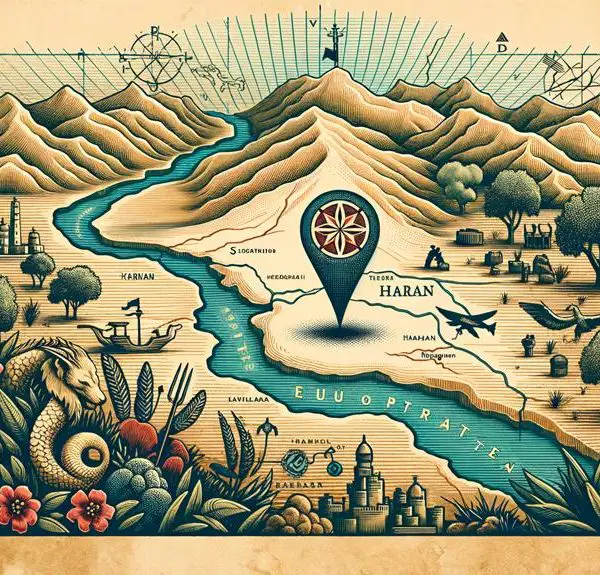
Sign up